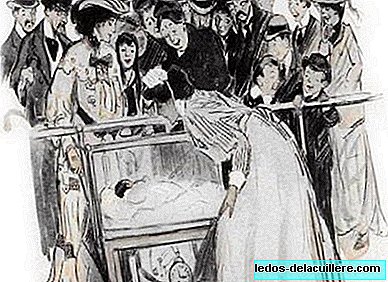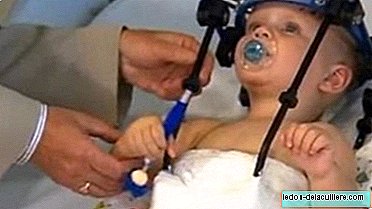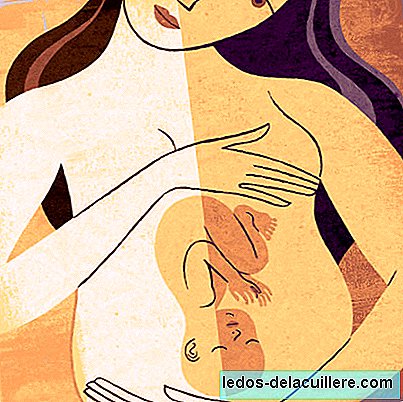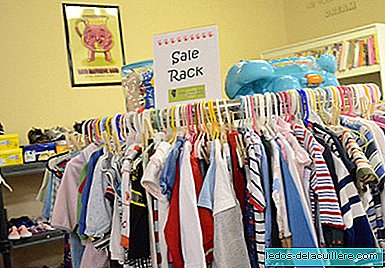
Although in the ancient myths we find the precedent of the incubator, this device that is used in neonatology to help premature babies develop, emerged relatively recently.
Before the nineteenth century there was no way to care for the premature baby, apart from being in the company of his mother, skin with skin in a kind of "kangaroo method" as other classic myths also suggest.
But the first to investigate technological discoveries to support premature babies who frequently died by not exceeding the first days of life were French midwives and midwives in the 19th century. For this they relied on devices that were used for chickens.
The first publication in the western world on the subject dates from 1857 and was prepared by Dr. Jean-Louis-Paul Denucé (1824-1889) from Bordeaux, France. It was the first report describing an incubator developed for the care of premature babies, about 400 words, without citing references, and published in the Journal of Médecine de Bordeaux.
It describes a double-walled zinc bathtub in which the space between the walls was filled with hot water to increase the interior temperature.
The Tarnier incubator
The 1878 Parisian gynecologist Stéphane Tarnier modified a chamber with a heater based on an incubator for chicken farming. They say that the obstetrician took a day off and, instead of going to work at the Maternité de Paris, the hospital for poor women in the capital, he went to the zoo.
In the Jardin des Plantes he saw an exhibition of incubators for chickens and, seeing that the newborn chicks trying to walk, in a warm environment of the incubator, had an association of ideas.
Shortly thereafter, he hired Odile Martin, the chicken's breeder at the zoo, to build a device that could do a service similar to human newborns.
Tarnier knew that temperature regulation was a crucial aspect for children not to die. Tarnier showed with a study that while 66% of those born with little weight died within a few weeks of being born, only 38% of those who spent time in Tarnier's hatchery were the same fate.
The incubator of Tarnier was not the first device that was used to maintain the body heat of the newborns but the statistical analysis that did supposed a definite push for the process of incubating the premature babies.
The first incubators
The date on which the first incubators for human babies were manufactured is unclear. Some bibliographical references place it in the 1850s, others nominate W. C. Deming as the first manufacturer in 1888.
But probably, and according to the impact of their advances in the press of the time, it was Alexander Lyons who in 1891 contributed important technological advances for incubators ("couveuses") that allowed to improve them remarkably. Their incubators, distributed throughout France, served the babies of disadvantaged families.
In England the incubator was introduced in 1887 according to a publication of the time, which discussed the use of these devices for the care of premature babies and referred to the first public incubators.
In the United States, the first incubator station for babies was introduced in 1898 in Illinois (Chicago) thanks to Dr. Josepf B. DeLee.
The premature ones in exhibitions
The success of the incubators was such that incubators with babies were shown to show the "miraculous" survival of the little ones, in fairs with lucrative purposes (Berlin, New York, Chicago…). This happened in several World Fairs, where incubator babies were an attraction.
An epidemic of diarrhea had to happen to raise awareness of the importance of keeping children isolated, even if exhibits were still being made with babies separated from the public by a glass. The baby incubators in the neonatology units began to be cubed.
One of the first bioethical disputes in medicine of the time emerged. In 1898 the medical publication "The Lancet" states:
What connection exists between the serious issue of human survival and the bearded woman, the dog man, the elephants, the representation of horses and pigs and the clowns and acrobats that constitute the main attraction of the Olympia Circus.
However, it was possible to exhibit incubators with the corresponding premature children at fairs and exhibitions in England and the United States until 1940.

20th century
Pierre Budin, being an obstetrician, is considered by many to be the father of neonatology, and already in 1907 he was concerned about the replacement of maternal functions in the care of the premature newborn. In his book "The Nursling" he wrote about the importance of temperature control of preterm infants For your survival.
Julius Hess, head of Pediatrics at Muchael Reese Hospital, established in his studies basic concepts for care in neonatology, became the leading American expert in premature infants and invented "Hess's incubator". He developed the oxygen box and was heated with hot water containers.
In 1938 Dr. Charles Chapple designed a modern children's incubator, a wooden device with heat input. It allowed high levels of oxygen therapy, but this invention led to an epidemic of retinopathy of prematurity.
As a curiosity, some incubators were made with the cabins or cabins of World War II, specifically the Vickers, taking advantage of the position of the bow gunner.
Portable incubator
In 1949, J. L. Pragel patented in Missouri (United States) a "transfer incubator" or portable, which apparently was one of the first built for this purpose. It was mainly used to transfer premature babies born at home to the hospital.
The transfer incubator was constructed of stainless steel and with a small plastic window that allowed to see its interior. It had a thermometer that allowed measuring the internal temperature and a small oxygen tank that provided an adequate mixture of gas for the children who needed it and were held with the hands of the operators.
Modern incubators
Around the middle of the 20th century, scientific and medical advances were made that perfected the concept of incubator and other resources in neonatology.
At the end of World War II, thanks to modern incubators, which incorporated oxygen therapy and other advances, the infant mortality rate fell significantly between 1950 and 1988: 75% less. However, in many countries there were still decades to wait for them to generalize.
It is also from that date when new technological advances in neonatology occur, with important economic dedications to the investigation of vital issues such as mechanical ventilation, fluid therapy, thermal control ...
At the end of the 1970s, the kangaroo method would emerge as an alternative to incubator care given to premature newborns who had overcome initial difficulties and who only needed to feed and grow.
The incubator story is not over, and probably new medical advances modify this device that ensures that premature babies get ahead with the least possible sequels, while its use is combined or complemented with other less technological and more human that also make the baby improve.












